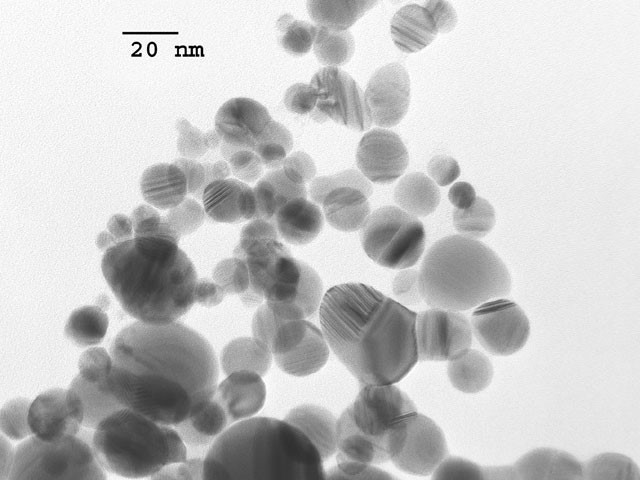With the ongoing COVID-19 pandemic, the need for general-purpose antiviral materials has never been more relevant. Metallic nanoparticles, and silver nanoparticles (AgNPs) in particular, have received considerable attention through efforts to meet this need. But what is it that makes AgNPs effective against viruses? How has this effectiveness been measured and quantified? And how can AgNPs be incorporated into products and treatments effectively? Answers to these questions provided by the scientific community are invaluable for separating the facts from the hype.
Published studies provide compelling evidence that AgNPs can disrupt the process of viral infection. Although it will require more time to confirm this for COVID-19 specifically, AgNPs have been shown to be effective against other types of coronaviruses. AgNPs are frequently referred to as “broad-spectrum” or “general-purpose” because they work against many different viruses rather than just a select few. The reason for this is that AgNPs are able to target many potential steps in the cycle of viral infection. AgNPs may prevent the virus from attaching to walls of host cells, or from entering the cells after attachment. Alternatively, the nanoparticles may be taken up into the host cells themselves and interfere with the capability of the virus to replicate. In some cases, the virus may be immobilized or destroyed by direct contact with the nanoparticles. It all depends on the type of virus, the cells targeted by the virus, and the ambient environment.
Most studies on antiviral efficacy of AgNPs are conducted in vitro – that is, they show that AgNPs impede viral infection in a petri dish or similar controlled environment outside a living organism. The experiments in these studies usually involve observation of the host cells targeted by the virus. By comparing the growth of infected host cells that receive AgNP treatment to those that do not, it is possible to infer the effectiveness of the treatment. Additionally, direct observation of the host cells at various stages of the infection, using techniques such as immunofluorescence microscopy, can be extremely informative. These characterizations allow researchers to narrow down the stages of viral infection that are disrupted most strongly by AgNPs. This knowledge is essential for establishing the timing and means of delivery for AgNP treatments that make the most sense for a particular virus and host cell pair.
With a clear picture of how published studies characterize the antiviral activity, it is possible to set expectations for how AgNPs will function in a real-world situation. The passive disinfection capabilities for AgNPs on textiles and other surfaces is particularly well-substantiated by successful in vitro trials. On the other hand, these trials also suggest that complete viral deactivation requires between a few hours and a few days. So, for personal protective equipment (PPE), AgNPs are most valuable in mitigating the risk associated with accidental contamination. AgNPs can also be effective as a coating on highly trafficked surfaces, or as an in vivo treatment, depending on the specific mechanisms of viral infection.
Finally, it is important to emphasize that not all n anoparticles are created equal. Size and surface chemistry both matter, and both vary across manufacturers. The NovaCentrix catalog, for example, encompasses 10 nm and 25 nm silver nanoparticles with a variety of capping agents. The effectiveness of NovaCentrix AgNPs have been validated across several viruses in peer-reviewed literature. However, the type of virus, cell host, ambient environment, and timing of AgNP exposure all have significant bearing on the effectiveness of AgNP materials. Systematic and informed product design is made possible by careful consideration of each of these factors.
anoparticles are created equal. Size and surface chemistry both matter, and both vary across manufacturers. The NovaCentrix catalog, for example, encompasses 10 nm and 25 nm silver nanoparticles with a variety of capping agents. The effectiveness of NovaCentrix AgNPs have been validated across several viruses in peer-reviewed literature. However, the type of virus, cell host, ambient environment, and timing of AgNP exposure all have significant bearing on the effectiveness of AgNP materials. Systematic and informed product design is made possible by careful consideration of each of these factors.
To learn more about antiviral and antimicrobial properties of AgNPs offered by NovaCentrix, take a look at our white paper (where you will also find a complete list of citations used for this article).


